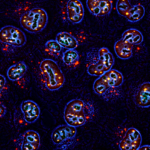Link to Pubmed [PMID] – 23830926
Mutat. Res. 2013 Aug;755(2):90-9
Primary liver cancer (PLC) is a major public health concern worldwide, ranking third among the causes of death from cancer. Molecular pathogenesis of PLC is known to be especially sensitive to ethno-environmental variations that modulate mutation spectra in tumours. Despite a high prevalence of chronic liver diseases, the molecular epidemiology of PLC is still poorly known in Russia. To characterize the major genetic features of liver tumours in Russian populations, we conducted a pilot study on 34 PLC cases (28 hepatocellular, two cholangiocellular, and four mixed cases) among patients attending the Radiology and Roentgenology Hospital in Saint Petersburg. Point mutations were searched in 9 genes that are commonly altered in PLC, viz. TP53, CTNNB1, AXIN1, H/K/N-RAS, BRAF, PTEN, and NFE2L2. The genes TP53 and AXIN1 were mutated in 16% and 10% of the cases, respectively, whereas mutations of β-catenin were present in only 7% of samples, an unusual situation for Europe but common in East Asia. No R249S mutation indicative of exposure to aflatoxin B1 was detected in TP53. A single case harboured an NFE2L2 mutation. The loss of chromosome 18q was associated with early onset of tumours (mean 50 vs 62yrs, p=0.0252) and with the patient’s place of birth in Caucasus or Siberia. A lack of any risk factor was noted in 47% of the patients, whereas only 23% of the patients were infected either by hepatitis virus B or C. An extension of the present cohort as well as further molecular studies are now warranted in order to understand the processes governing liver carcinogenesis affecting Russian populations.

